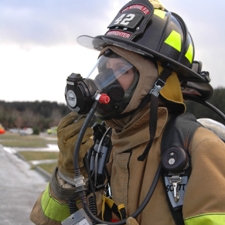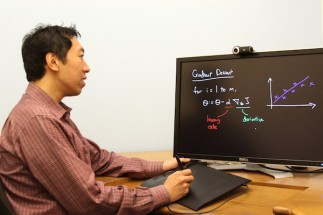Oscar-winning actress Jodie Foster is blending fiction with reality in her effort to jump-start the real-life search for extra terrestrial intelligence.
Foster starred in “Contact”, the movie adaptation of a book by the late Carl Sagan.
In the 1997 movie, she played Eleanor Arroway, a gifted scientist who becomes the director of a project dedicated to the search for extra terrestrial intelligence.

SETI Institute’s Allen Telescope Array – (Photo: SETI Institute)
Well, Foster’s Ellie Arroway is back, in a way.
Foster wants to help the real-life SETI get back on its feet, by contributing to the SETI Institute in Mountain View, California.
Her donation, along with others, raised $200,000 to help restart the institute’s “Allen Telescope Array,” which was shut down due to lack of funds this past April.
The SETI Institute says its mission is to explore, understand and explain the origin, nature and prevalence of life in the universe.
New Tool to Help First Responders

A First Responder (Photo: US Coast Guard by Petty Officer First Class Paul Roszkowski)
A new high-tech tool is designed to help first responders better prepare for action following a disaster by providing accurate models of building damage and other post-event disaster effects.
Police, emergency crews and other first responders were introduced to the new tool when they took part in the recent National Level Exercise.
Using the easily-available Apple iPad mobile device, the emergency teams employed the science-based software application called the Standard Unified Modeling, Mapping and Integration Toolkit (SUMMIT).
Developed by the US Department of Energy’s Sandia National Laboratories, SUMMIT’s software architecture helps emergency preparedness professionals gain access to post-disaster models, helping ensure consistency, accuracy and robustness when various exercise scenarios are developed and played out.
The SUMMIT system takes key information into consideration, such as details on buildings and infrastructure and casualties. During exercises, it visualizes an integrated “story” that can be made available for all players operating within the reach of a master control cell.
Jalal Mapar, the program manager who oversees the SUMMIT program, says that the broader goal is to make SUMMIT an everyday part of preparedness and response for emergency managers, responders and exercise teams at the federal, state and local level.
Zoom, zoom alligator!

(Photo: Steven Beger Photography (Beger.com Productions))
As the search for sustainable energy continues, bio-fuel – energy products made from biological material such as corn, soybeans, wood, and waste – is one of the more popular sources of alternative energy.
But there are concerns the price of food crops currently used to produce bio-fuel will increase. To respond to that concern, scientists have identified a new and unlikely raw material to produce the fuel.
Are you ready for this? Alligator fat.
In laboratory experiments, Rakesh Bajpai and his colleagues at the University of Louisiana at Lafayette, showed that oil extracted from alligator fat can easily be converted into bio-diesel.
The researchers found that gator oil actually was more suitable for bio-diesel production than oil from some other animal fats.
The research team says alligator-fat based bio-diesel is similar in composition to fuel produced from soybeans, meeting nearly all of the official standards for high quality bio-diesel.
Stanford University Classes FOR FREE!

Computer Science professor Andrew Ng uses tablet-recording technology he developed to instantly display notes for his interactive video lecture. (Photo: Stanford University/Morgan Quigley)
In an example of man’s never-ending quest for knowledge, some 85,599 people have signed up to participate in a free online course, “Introduction to Artificial Intelligence,” offered by Stanford University’s School of Engineering.
The class is among three of the school’s most popular computer science courses being offered for free online this fall. The other two classes are Machine Learning and Introduction to Databases.
Stanford engineering professors offer these classes to extend the benefits of a Stanford-style education to those who otherwise wouldn’t have access to it.
The professors plan to use the same technologies that are already used to enhance learning for Stanford students.
The courses are delivered online as short, interactive video clips that allow students to progress through course materials at their own pace.
They’re offering online students live quizzes with instant feedback and are testing new technologies which allow students to rank questions that should be posed to the instructors.





















Atta girl, Jodie !
SETI is a worthwhile project, and I hope it stays alive until we hear a real message from ET.